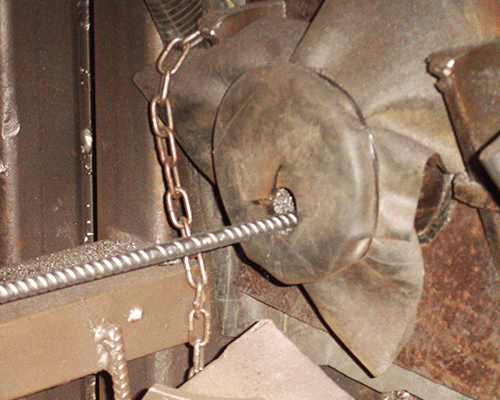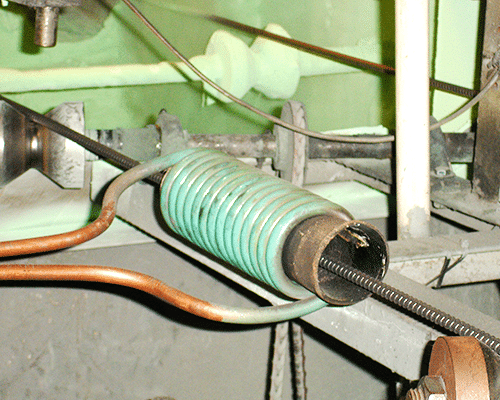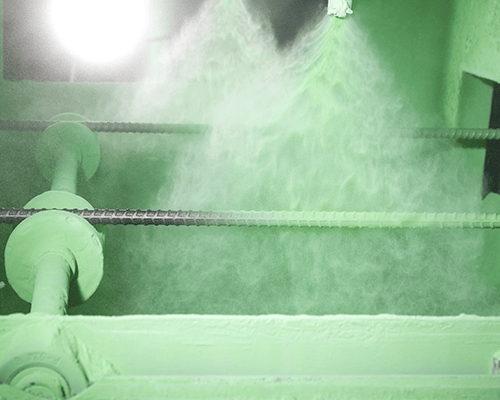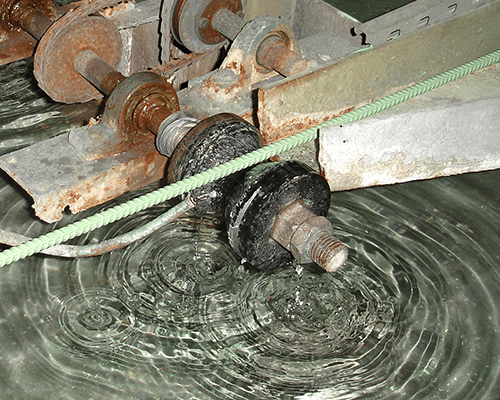Manufacturing Process
The application of fusion-bonded epoxy coating to steel reinforcement involves four major process steps:
- surface preparation
- heating
- powder application and
- cure
In most North American coating plants, reinforcing bar is first coated in straight lengths and then fabricated (i.e., cut to length and bent to shape). A few facilities have the capabilities to coat reinforcing steel (both bars and welded wire fabric) after it has been fabricated. Regardless of the facility’s configuration, the four basic steps of application are required.

Surface Preparation
Reinforcing bars are blast-cleaned to a near white metal finish using abrasive grit. This cleans the steel of contaminants, mill scale and rust. It also roughens the surface to give it a textured anchor profile. During this process, salt contamination is also removed.

Heating
Bars are heated to approximately 450°F, typically using electrical induction heaters, although gas-fired heating is used in some cases.

Power Application
The heated steel is passed through a powder-spray booth where the dry epoxy powder is emitted from a number of spray nozzles. As the powder leaves the spray gun, an electrical charge is imparted to the particles. These electrically charged particles are attracted to the grounded-steel surface providing even coating coverage. When the dry powder hits the hot steel, it melts and flows into the anchor profile (i.e., the microscopic peaks and the valleys on the surface) and conforms to the ribs and deformations of the bar. The heat also initiates a chemical reaction that causes the powder molecules to form complex cross-linked polymers which give the material its beneficial properties.

Cure
Following powder application, the coating is allowed to cure for a short period (approximately 30 seconds) during which time it hardens to a solid. In some plants, the curing is often followed by an air or water quench that quickly reduces the bar temperature to facilitate handling.